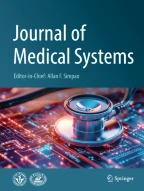Abstract
Wireless Body Area Network (WBAN) consists of low-power, miniaturized, and autonomous wireless sensor nodes that enable physicians to remotely monitor vital signs of patients and provide real-time feedback with medical diagnosis and consultations. It is the most reliable and cheaper way to take care of patients suffering from chronic diseases such as asthma, diabetes and cardiovascular diseases. Some of the most important attributes of WBAN is low-power consumption and delay. This can be achieved by introducing flexible duty cycling techniques on the energy constraint sensor nodes. Stated otherwise, low duty cycle nodes should not receive frequent synchronization and control packets if they have no data to send/receive. In this paper, we introduce a Traffic-adaptive MAC protocol (TaMAC) by taking into account the traffic information of the sensor nodes. The protocol dynamically adjusts the duty cycle of the sensor nodes according to their traffic-patterns, thus solving the idle listening and overhearing problems. The traffic-patterns of all sensor nodes are organized and maintained by the coordinator. The TaMAC protocol is supported by a wakeup radio that is used to accommodate emergency and on-demand events in a reliable manner. The wakeup radio uses a separate control channel along with the data channel and therefore it has considerably low power consumption requirements. Analytical expressions are derived to analyze and compare the performance of the TaMAC protocol with the well-known beacon-enabled IEEE 802.15.4 MAC, WiseMAC, and SMAC protocols. The analytical derivations are further validated by simulation results. It is shown that the TaMAC protocol outperforms all other protocols in terms of power consumption and delay.
Similar content being viewed by others
References
Hoiydi, E., and Decotignie, J.D., WiseMAC: An ultra low power MAC protocol for the downlink of infrastructure WSNs. In: The Proc. of Ninth International Symposium on Computers and Communications 2004 (ISCC 2004). Vol. 1, pp. 244–251, 2004.
Polastre, J., Hill, J., and Culler, D., Versatile low power media access for wireless sensor networks. In: The Proc. of the 2nd International Conference on Embedded Networked Sensor Systems. pp. 95–107. New York, NY, USA, 2004.
Wei, Y., Heidemann, J., and Estrin, D., An energy-efficient MAC protocol for wireless sensor networks. In: The Proc. of the IEEE Infocom 2002. pp. 1567–1576. New York, NY, USA, 2002.
van Dam, T., and Langendoen, K., An adaptive energy-efficient MAC protocol for WSNs. In: The Proc. of the 1st ACM Conf. on Embedded Networked Sensor Systems (Sen-Sys 2003). pp. 171–180. Los Angeles, CA, 2003.
Khan, N.P., and Boncelet, C., PMAC: Energy efficient medium access control protocol for wireless sensor networks. In: The Proc. of IEEE Military Communications Conference. pp. 1–5. Washington, DC, USA, 2006.
IEEE Std.802.15.4: Wireless medium access control (MAC) and physical layer (PHY) specifications for low data rate wireless personal area networks (WPAN). IEEE: Piscataway, NJ, USA, 2006.
Johansson, P., Kazantzidis, M., Kapoor, R., and Gerla, M., Bluetooth: An enabler for personal area networking. IEEE Netw. 15(5):28–37, 2001.
Li, C., Li, H.-B., and Kohno, R., Performance evaluation of IEEE 802.15.4 for wireless body area network. In: The Proc. of IEEE International Conference on ICC Workshops. pp. 1–5. Dresden, Germany, 2009.
Timmons, N.F., and Scanlon, W.G., Analysis of the performance of IEEE 802.15.4 for medical sensor body area networking. In: The Proc. of IEEE SECON. pp. 4–7. Santa Clara, CA, USA, 2004.
Ullah, S., Higgins, H., Shen, B., and Kwak, K.S., On the implant communication and MAC protocols for WBAN. Int. J. Commun. Syst. In press, 2010.
Li, H., and Tan, J., An ultra-low-power medium access control protocol for body sensor network. In: 27th Annual International Conference of the Engineering in Medicine and Biology Society 2005 (IEEE-EMBS 2005). pp. 2451–2454. Shanghai, 2005.
Chen, Z., Chao, H., Jingsheng, L., and Shoubin, L., Protocol architecture for wireless body area network based on nRF24L01. In: The Proc. of IEEE International Conference on Automation and Logistics 2008 (ICAL 2008). pp. 3050–3054, 2008.
Omeni, O., Wong, A.W., Burdett, A.J., and Toumazou, C., Energy efficient medium access protocol for wireless medical body area sensor networks. IEEE Trans. Biomed. Circuits Syst. 2(4):251–259, 2008.
Milenkovic, A., Otto, C., and Jovanov, E., Wireless sensor network for personal health monitoring: Issues and an implementation. Comput. Commun. 29:2521–2533, 2006.
Li, H.M., and Tan, J.D., Heartbeat driven MAC for body sensor networks. In: The Proc. of the 1st ACM SIGMOBILE International Workshop on Systems and Networking Support for Healthcare and Assisted Living Environments. pp. 25–30. San Juan, Puerto Rico, 2007.
Li, C., and Kohno, H.B., Reservation-based dynamic TDMA protocol for medical body area networks. IEICE Trans. Commun. 92(2):387–395, 2009.
Fang, G., and Dutkiewicz, E., BodyMAC: Energy efficient TDMA-based MAC protocol for wireless body area networks. In: The Proc. of International Symposium on Communications and Information Technologies 2009 (ISCIT 2009). Incheon, Korea, 2009.
Su, H., and Zhang, X., Battery-dynamics driven TDMA MAC protocols for wireless body-area monitoring networks in healthcare applications. IEEE J. Sel. Areas Commun. (J-SAC) 27(4):424–434, 2009.
Marinkovic, S.J., Popovici, E.M., Spagnol, C., Faul, S., and Marnane, W., Energy-efficient low duty cycle MAC protocol for wireless body area networks. IEEE Trans. Inf. Technol. Biomed. 13(6): 915–925, 2009.
Braem, B., et al., The wireless autonomous spanning tree protocol for multihop wireless body area networks. In: The Proc. of International Workshop on Personalized Networks. pp. 1–8, 2006.
Latre, B., et al., A low-delay protocol for multihop wireless body area networks. In: The Proc. of Annual International Conference on Mobile and Ubiquitous Systems: Networking and Services. pp. 1–8, 2007.
El-Hoiydi, A., and Decotignie, J.D., Low power downlink MAC protocols for infrastructure wireless sensor networks. ACM Mob. Netw. Appl. 10(5):675–690, 2005.
Acknowledgement
This work was supported by the National Research Foundation of Korea (NRF) grant funded by the Korea government (MEST) (No. 2010-0018116).
Author information
Authors and Affiliations
Corresponding author
Rights and permissions
About this article
Cite this article
Ullah, S., Kwak, K.S. An Ultra Low-power and Traffic-adaptive Medium Access Control Protocol for Wireless Body Area Network. J Med Syst 36, 1021–1030 (2012). https://doi.org/10.1007/s10916-010-9564-2
Received:
Accepted:
Published:
Issue Date:
DOI: https://doi.org/10.1007/s10916-010-9564-2
